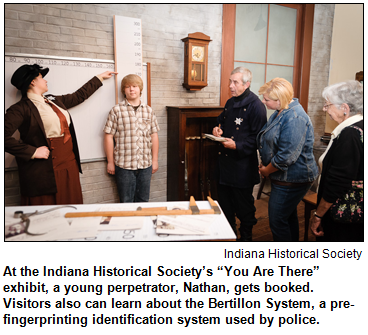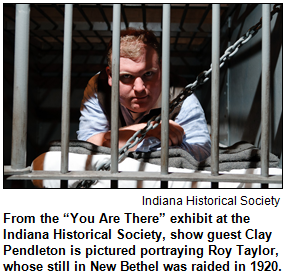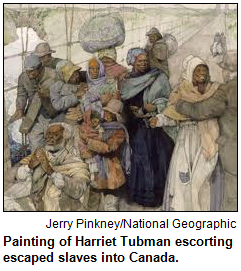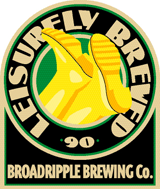You can listen to Hoosier History Live! live on the air each Saturday, or listen online at the WICR website during the broadcast on any computer with speakers, anywhere, or on a smartphone. We invite you to visit our website!
June 25 show
Prohibition in Indiana
Speakeasies, moonshine and bootleggers are associated with an era across the country that spanned about 14 years - actually, a bit longer in Indiana because the state went "dry" in 1918, nearly two years before the nation.
 And for several years before Prohibition, some Indiana counties such as LaGrange and Randolph already had prohibited the manufacturing, sale and transportation of alcohol, according to a new exhibit at the Eugene and Marilyn Glick Indiana History Center. Titled "Busted: Prohibition Enforced," the exhibit depicts an arrest based on a raid in 1920 of a major bootlegger operating out of a barn near New Bethel (now known as Wanamaker) in far-southeastern Marion County.
And for several years before Prohibition, some Indiana counties such as LaGrange and Randolph already had prohibited the manufacturing, sale and transportation of alcohol, according to a new exhibit at the Eugene and Marilyn Glick Indiana History Center. Titled "Busted: Prohibition Enforced," the exhibit depicts an arrest based on a raid in 1920 of a major bootlegger operating out of a barn near New Bethel (now known as Wanamaker) in far-southeastern Marion County.
To explore this colorful era, Nelson will be joined in studio by Marc Carmichael of the Indiana Beverage Alliance and Clay Pendleton of the Indiana Historical Society. They plan to share Indiana-specific insights about Prohibition, ranging from the influence of the Woman's Christian Temperance Union (WCTU) and Quakers to some unexpected outcomes, including the fact that per capita consumption of alcohol actually increased during the 1920s, the opposite of the intended effect.
Another development: In 1923, during the height of Prohibition, Indiana lawmakers passed the state's first drunk-driving law.
 Marc, a former state legislator from Muncie, has researched Prohibition, which ended in 1933. Clay not only helped research the "Busted: Prohibition Enforced" exhibit, he is a re-enactor who portrays the bootlegger, a New Bethel resident named Roy Taylor who was operating a lucrative still selling homemade liquor for $5 to $6 a gallon. When Taylor's still in a rented barn was raided by police in December 1920, it was considered the largest bootlegging bust in the Midwest since Prohibition began.
Marc, a former state legislator from Muncie, has researched Prohibition, which ended in 1933. Clay not only helped research the "Busted: Prohibition Enforced" exhibit, he is a re-enactor who portrays the bootlegger, a New Bethel resident named Roy Taylor who was operating a lucrative still selling homemade liquor for $5 to $6 a gallon. When Taylor's still in a rented barn was raided by police in December 1920, it was considered the largest bootlegging bust in the Midwest since Prohibition began.
Advocates for Prohibition included the WCTU, which argued that women and children were frequent, innocent victims of alcohol abuse, and Quakers, who often practiced temperance although drinking alcohol was not forbidden by the church. According to several sources, the influence of Quakers was particularly persuasive in Randolph County and other parts of far-eastern Indiana.
On a national level, Prohibition was set in motion in 1919, when state legislatures ratified the 18th Amendment; it took effect in January 1920 and banned the manufacturing, sale and transportation (but not the consumption) of alcohol.
In 1921, though, the Indiana legislature made mere possession of alcohol illegal. According to an article in the Historical Society's magazine, Traces of Indiana and Midwestern History, Hoosier lawmakers even banned the sale of products such as hair tonics if they contained alcohol that could be used for "beverage purposes."
Lickety-split, as soon as Prohibition began alcoholic drinks were sold at speakeasies and other underground retailers. According to "Busted: Prohibition Enforced," pickpockets and other petty criminals often became moonshine-makers or bootleggers because it was so lucrative. ("Moonshiners" made the alcohol, while "bootleggers" transported it.)
Some facts to whet your appetite for Saturday's show:
 In April 1918, when Indiana went "dry" nearly two years before the country, about 30 breweries and more than 2,580 saloons across the state closed their doors, according to A History of Alcohol and Politics in Indiana, a publication by Marc Carmichael, one of our guests, and Harold Freightner.
In April 1918, when Indiana went "dry" nearly two years before the country, about 30 breweries and more than 2,580 saloons across the state closed their doors, according to A History of Alcohol and Politics in Indiana, a publication by Marc Carmichael, one of our guests, and Harold Freightner.- Indianapolis Brewing Company survived the era by selling malt extracts and legal medicinal tonics, according to the Historical Society. The brewing company had been formed in 1897 by merging three local breweries.
- "Prohibition brought unforeseen health risks," according to Traces magazine. "Bootleggers made their alcohol using whatever was available, sometimes unwittingly producing a poisonous mixture." Many consumers of illegal alcohol lost their vision (hence the slang term "blind tigers" for establishments that served bootleg alcohol), suffered paralysis or even died.
- When the Indiana legislature made drunk driving a crime in 1923, the punishment was $500 and a jail sentence of up to six months. Repeat offenders faced prison terms as long as five years.
- In the recent bestseller Last Call: The Rise and Fall of Prohibition (Scribner, 2010), author Daniel Okrent identifies Detroit as the country's "wettest city." Noting that Detroit was dubbed "the city on a still," Okrent reports the illegal alcohol business employed 50,000 people there and became the city's second-largest industry, eclipsed only by auto-making.
- Prohibition, which became known as a "noble experiment," ended in 1933.
History Mystery question
In the early 1900s - before Prohibition - one of the country's largest brewers was located in an Indiana city. In this city - not Indianapolis - the biggest brewery consisted of a five-story complex.  It included a bottling plant and a stable with more than 55 Clydesdale and Belgian horses used to draw wagons that delivered the beer, according to the book True Brew, by Rita Kohn.
It included a bottling plant and a stable with more than 55 Clydesdale and Belgian horses used to draw wagons that delivered the beer, according to the book True Brew, by Rita Kohn.
Like Indianapolis, this Indiana city has a significant German heritage. The city's beer-making tradition continued long after Prohibition. A beer called Champagne Velvet brewed in the city was nationally popular during the 1940s and '50s.
Question: Name the Indiana city.
To win the prize, you must call in with the correct answer during the live show. The call-in number is (317) 788-3314, and please do not call until you hear Nelson pose the question on the air. Please do not call if you have won a prize from any WICR show during the last two months. The prize is a one-year household membership to the Indiana Historical Society, which includes free admission for all to the Indiana Experience, courtesy of the Indiana Historical Society.
Roadtrip: Underground Railroad research workshop in Pendleton
 Chris Gahl of the ICVA tells us to head northeast to historic Pendleton, Ind., for a one-day workshop on Thursday, July 11, for Underground Railroad history researchers at the Pendleton Public Library. The workshop is administered by the Indiana Department of Natural Resources, Division of Historic Preservation & Archeology, and is presented by Dr. Paul Finkelman of the Albany Law School.
Chris Gahl of the ICVA tells us to head northeast to historic Pendleton, Ind., for a one-day workshop on Thursday, July 11, for Underground Railroad history researchers at the Pendleton Public Library. The workshop is administered by the Indiana Department of Natural Resources, Division of Historic Preservation & Archeology, and is presented by Dr. Paul Finkelman of the Albany Law School.
While in Pendleton, be sure to visit historic Falls Park along Fall Creek, which has a series of hiking trails and a history museum. The falls there served as a community focal point for centuries and is also the site where three white settlers were executed by hanging in 1825 for their massacre of a group of nine Native Americans near that spot in what is now known as the Fall Creek Massacre. Their execution is significant in that it represents the first time in American history that whites were tried, convicted and executed for murdering Native Americans.
Your Hoosier History Live! team,
Nelson Price, host and creative director
Molly Head, producer, (317) 927-9101
Chris Gahl, Roadtripper
Richard Sullivan, webmaster and tech director
Pam Fraizer, graphic designer
Garry Chilluffo, creative consultant
Michele Goodrich, Jed Duvall, grant consultants
www.hoosierhistorylive.org







Please tell our sponsors that you appreciate their support: Aesop's Tables, Broad Ripple Brewpub, Heartland Truly Moving Pictures, Indiana Historical Society, Lucas Oil, Story Inn and The Society of Indiana Pioneers.
 Acknowledgments to Print Resources, Indianapolis Marion County Public Library, Monomedia, Indiana Humanities, Indianapolis Convention & Visitors Association, WICR-FM, Fraizer Designs, Heritage Photo and Research Services, Chelsea Niccum and many other individuals and organizations. We are an independently produced program and are self-supporting through organizational sponsorships, grants and through individual tax-deductible contributions through the Indiana Humanities Council. Visit our website to learn how you can support us financially.
Acknowledgments to Print Resources, Indianapolis Marion County Public Library, Monomedia, Indiana Humanities, Indianapolis Convention & Visitors Association, WICR-FM, Fraizer Designs, Heritage Photo and Research Services, Chelsea Niccum and many other individuals and organizations. We are an independently produced program and are self-supporting through organizational sponsorships, grants and through individual tax-deductible contributions through the Indiana Humanities Council. Visit our website to learn how you can support us financially.
We thank our individual 2011 donors
We thank Patricia Rooney, Theresa and David Berghoff, Gretchen Wolfram, Richard Vonnegut, Don Gorney, Ellen Lee, Joe Young, Dana Waddell and Clay Collins, and Maureen Dunlap "In memory of Mary Jane Lincoln of Columbus, Indiana."
More information about individual donation is available at our website at Support Hoosier History Live!
July 2 - encore show
Fall Creek Massacre
 When white men were found guilty by a jury and executed for the slaughter of nine Native Americans in March 1824, it was a milestone in American history. Following what became known as the Fall Creek Massacre, whites for the first time were convicted and executed for the murders of Indians under American law.
When white men were found guilty by a jury and executed for the slaughter of nine Native Americans in March 1824, it was a milestone in American history. Following what became known as the Fall Creek Massacre, whites for the first time were convicted and executed for the murders of Indians under American law.
To explore all aspects of the brutal crimes in the swampy woods of Madison County, where Native Americans (including three women and four children) were gruesomely murdered, Nelson will be joined in studio by David Thomas Murphy, author of Murder in Their Hearts: The Fall Creek Massacre (Indiana Historical Society Press).
A professor of history at Anderson University, David has spent four years researching the massacre, trial and subsequent developments, including the social history of pioneer Hoosiers (Indiana only had been a state for about seven years at the time of the massacre) and of the Native Americans in the region.
David says he struggled to reconcile conflicting accounts of the events (the tribal origins of some of the victims remains unclear) as well as the motivations involved.
"The slaughter in the soggy Indiana creek bottoms created a short-lived but serious national security crisis," David writes, referring to concerns across the country that warfare would erupt across newly developing states. Noting that tensions had been brewing between whites and Native Americans for weeks prior to the massacre, David says the attitudes of many white settlers toward Indians were complex and nuanced, mixing respect, fear, tolerance and suspicion.
 Even though the carnage of the Fall Creek Massacre drew national attention at the time, the slaughter and judicial outcome often are not mentioned in accounts of white-Native American relations, David says.
Even though the carnage of the Fall Creek Massacre drew national attention at the time, the slaughter and judicial outcome often are not mentioned in accounts of white-Native American relations, David says.
An exception involved the late author Jessamyn West, an Indiana native, who wrote a best-selling novel, The Massacre at Fall Creek (1975), about the shocking episode in Hoosier history.
This show is an encore broadcast of a popular program in our Hoosier History Live! archives. (The original broadcast date was Sept. 11, 2010.) So there won’t be an opportunity for call-in questions from listeners. But that opportunity will return July 9 with a brand-new Hoosier History Live! show.
© 2011 Hoosier History Live! All rights reserved.